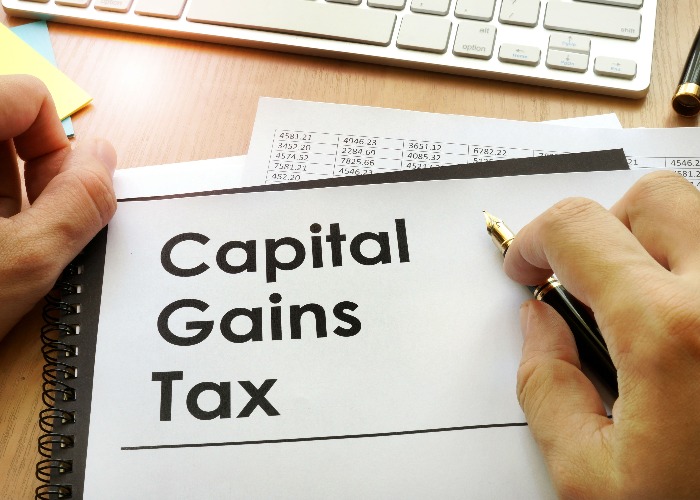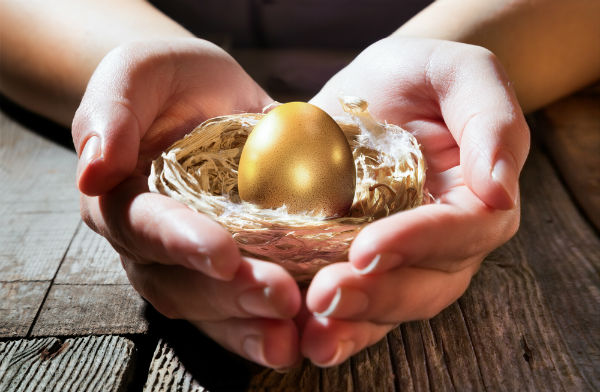How to avoid or cut Capital Gains Tax by using your tax-free allowance, getting an ISA and more

If you want to reduce or avoid Capital Gains Tax on property or investments, there are various legal tactics to do so.
Sections
- CGT bills to hit £15.2bn – and could soar even further
- Make the most of your CGT Allowance
- Calculating your CGT bill
- Spread gains over tax years
- Offset losses against gains
- Gift assets to your spouse
- Bed your spouse
- Get an ISA
- Bed and ISA
- Bed and SIPP
- Invest in small companies
- Reduce taxable income
- Let the taxman know
CGT bills to hit £15.2bn – and could soar even further
Capital Gains Tax (CGT) is a huge earner for the Government.
The Office for Budget Responsibility estimates that it will raise £15.2 billion in the current tax year, equivalent to £530 per household.
Worryingly for investors and landlords (who generally pay the tax), CGT bills could rise further as the Government is rumoured to be plotting changes in this Autumn's Budget.
This guide is part of a larger guide on '20 ways to pay less tax': read the full version here
Make the most of your CGT Allowance
Capital Gains Tax (CGT) is charged on the profits you make when certain assets are sold or transferred.
However, everyone gets a CGT Allowance and you only pay tax on gains made above your this.
The bad news is this allowance is being drastically slashed.
Two years ago it was worth £12,300, but this dropped to £6,000 last year and is worth just £3,000 in the current tax year.
Calculating your CGT bill
The rate of CGT currently depends on whether you're a Basic Rate or Higher Rate or Additional Rate taxpayer.
For Higher Rate or Additional Rate taxpayers this is simple: it's 28% on your gains from residential property or 20% on your gains from other chargeable assets.
Unfortunately for Basic Rate taxpayers, the situation is a little more complicated:
Start by working out your annual income, minus the Personal Allowance (currently £12,570) and any other tax reliefs you receive.
Take that figure and add your capital gains from the year.
Then reduce that number by the Capital Gains Tax allowance (currently £12,300).
Is the figure you come out with less than £50,000? If so, you'll pay 10% tax on your gains or 18% on residential property.
Any amount above £50,000 will be charged at 20% on gains and 28% for residential property.
List of tax codes: check you're on the right UK tax code for 2022/23
Spread gains over tax years
Instead of selling, say, a whole heap of shares all in one go, you can split your sales over two or more tax years.
For example, you could sell some shares in 2024/25 and then sell more on or after 6 April 2025.
By doing so, you can take advantage of both years’ CGT allowances, currently worth a total of £6,000.
Pay less tax: 8 tax breaks and boosts you have to ask for
Offset losses against gains
When calculating your CGT bill, you deduct capital losses from capital gains in order to arrive at your net gain. For example, a gain of £25,000 minus a loss of £10,000 produces a net gain of £15,000.
Therefore, by crystallising losses in the same tax year as gains, you can bring down your tax bill. Also, in most cases, losses made up to four years ago can be offset against current gains.
You can't claim a loss for selling an asset to a 'connected person', such as a family member or business partner.
Gift assets to your spouse
Transfers between spouses is currently exempt from CGT. So by gifting assets to your spouse (or Civil Partner), you take advantage of both CGT tax-free allowances.
Alternatively, you could transfer partial ownership to a spouse – useful if your spouse is on a lower tax band then you.
Marriage Allowance: how to get a tax break
Bed your spouse
No saucy remarks, please!
Another way married couples and civil partners can avoid CGT is by one spouse or civil partner selling assets to crystallise a gain, while the other spouse buys them back.
This ‘bed and spouse’ technique to crystallise gains doesn’t work for outright gifts, as these do not attract CGT.
Instead, one spouse must, say, sell shares to a broker while the other simultaneously buys them back from the same broker.

Get an ISA
Over 19 million Brits use a popular tax shelter known as an Individual Savings Account (ISA) to keep income and capital gains safe from the taxman’s grasp.
In this tax year, investors can put up to £20,000 into an ISA of which all can be in cash or stocks and shares, or a combination of the two.
Gains made inside an ISA are free from CGT, so an ISA is one of the best defences against paying needless tax.
Over many years, some investors have built up six-figure sums inside ISAs, all safe from HM Revenue & Customs' reach.
Bed and ISA
As with the ‘bed and spouse’ technique, ‘bed and ISA’ involves selling assets (such as shares, investment funds and bonds) to produce a capital gain and then immediately buying back the same assets inside the safety of an ISA.
Thus, you could sell directly held assets worth up to £20,000 and then use the proceeds of this sale to fund a near-identical purchase (after dealing charges) inside an ISA. This enables all future gains on this asset to avoid CGT.
Bed and SIPP
Another sell-and-buy-back technique is ‘bed and SIPP’ which involves – you guessed it – selling assets and then buying them back inside the shelter of a pension known as a Self-Invested Personal Pension (SIPP).
All income and gains made inside a SIPP are tax-free, making it a very popular option for saving towards retirement.
Invest in small companies
By investing in special tax-efficient programmes which provide funding to small businesses, you can reclaim some – if not all – of the Income Tax and CGT you’ve previously paid.
These schemes, known as Venture Capital Trusts (VCTs) and Enterprise Investment Schemes (EISs) are usually extremely risky, so they are best left to experienced and wealthy investors.
It's important to talk to a qualified advisor before even considering these schemes.
Reduce taxable income
The rate of CGT is charged based on the rate of Income Tax paid.
Therefore lowering taxable income in any one year could reduce the CGT rate from 20% to 10%, or 28% to 18% if you are selling residential property.
Reducing taxable income can be done in a number of ways: waiting for retirement and a change from earnings to pension income; salary sacrifice through pension contributions or childcare vouchers, deferring the State Pension or transferring taxable income bearing assets such as cash deposits to a lower-earning spouse.
Passing on property: gifts, Inheritance Tax & trusts explained
Let the taxman know
Finally, while ‘tax avoidance’ is legal, ‘tax evasion’ is illegal. So don’t be tempted to sell assets without declaring any gains to HMRC.
Defrauding the taxman could land you with a hefty fine and even a prison sentence!
Comments
Be the first to comment
Do you want to comment on this article? You need to be signed in for this feature
